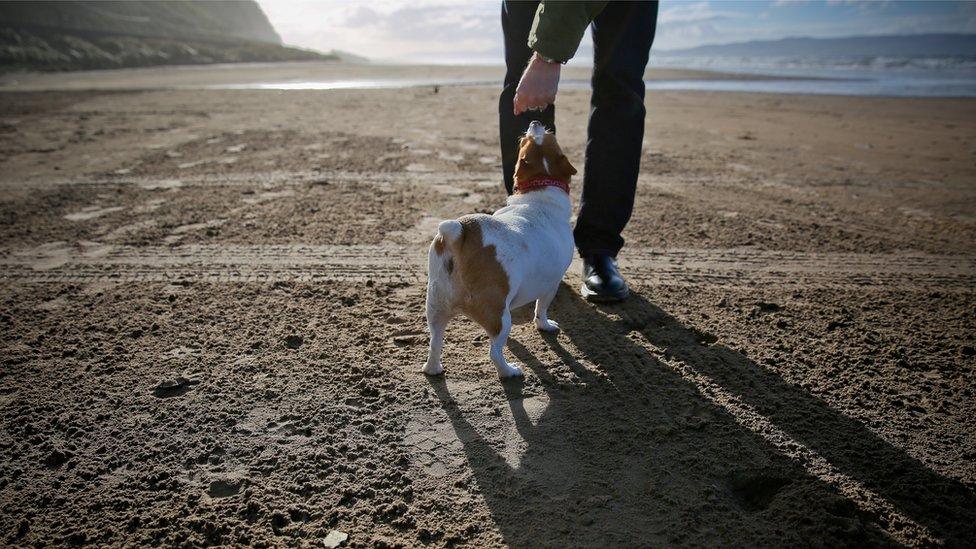Lough Neagh: Environmentalists hold 'wake' after algal blooms
- Published

A wreath was laid on top of the coffin during the 'wake' on Sunday
Protesters held a 'wake' for the UK's largest fresh water lake, Lough Neagh, to highlight their fears that the lough is dying.
Campaigners say pollution is killing the lake, with wildlife and birds suffering after blue-green algal blooms over the summer.
Lough Neagh supplies half of Belfast's drinking water and 40% of Northern Ireland's overall.
Some angling groups have said pollution is putting livelihoods at risk.
Lough Neagh is also home to the largest commercial wild eel fishery in Europe.
On Sunday, more than 100 protesters - many dressed in black - accompanied a coffin along the lough shore to represent their concerns about the death of the lake.
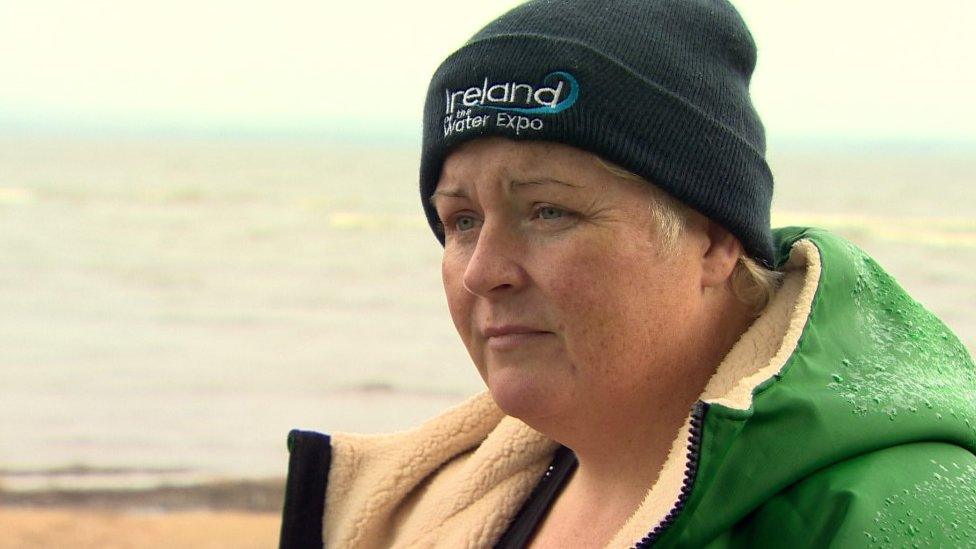
Mary O'Hagan says her mental and physical health has suffered since she stopped swimming in Lough Neagh
Mary O'Hagan, founder of a swimming group which regularly uses the lough, said her health had suffered as a result of being unable to swim there.
"I had this wonderful community around me," she said.
"Everybody used that same coping mechanism of getting into the cold water and that has just been devastated by this.
"My pain is a lot worse, my medications have had to be increased and my mental health has suffered."
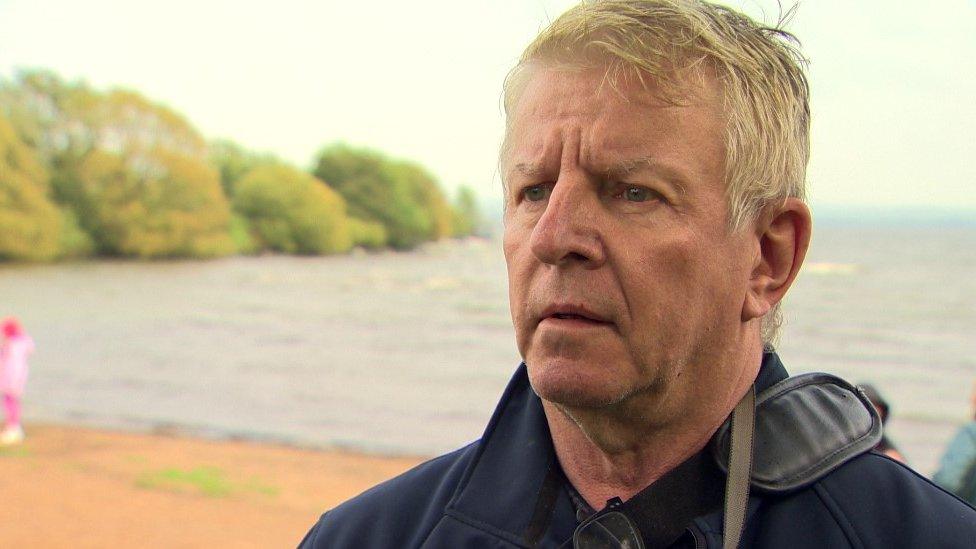
"This is the biggest Lough in Ireland and the UK and it's dying," says angler Gary Gregg
Angler Gary Gregg said a plan to tackle the issue needed to be drawn up before it was too late.
"There needs to be a roadmap and it needs to be followed because we're not going to get anywhere, especially with Stormont not sitting," he said.
"It's just going to get worse and worse and we can't let that happen.
"This is the biggest lough in Ireland and the UK and it's dying."

Lough Neagh provides 40% of Northern Ireland's drinking water
Earlier, speaking on the BBC's Sunday Politics programme, former agriculture and environment minister Edwin Poots said the algae was a "very significant issue".
"Lough Neagh is such an important water body, it provides 40% of Northern Ireland's drinking water.
"We have scientists and we need those scientists to report back to us on what we can do."
Mr Poots said the algae was largely caused by the invasive species of zebra mussels present in the lough.
"Once they get in you can't get rid of them... this may be a recurring problem, I'm not sure whether there's a scientific solution to it."
'A smell from your tap'
Patsy McGlone, a Social Democratic and Labour Party (SDLP) assembly member, said there had been an "erosion of confidence in many cases about the water supply and concerns about it; smells, tastes and that".
Mr McGlone called on NI Water to "reassure the public about the quality of the water that's being consumed".
In statement issued on Friday, NI Water said that "increased levels of algae can cause an unusual taste and smell to water from your tap but does not pose a risk to health".
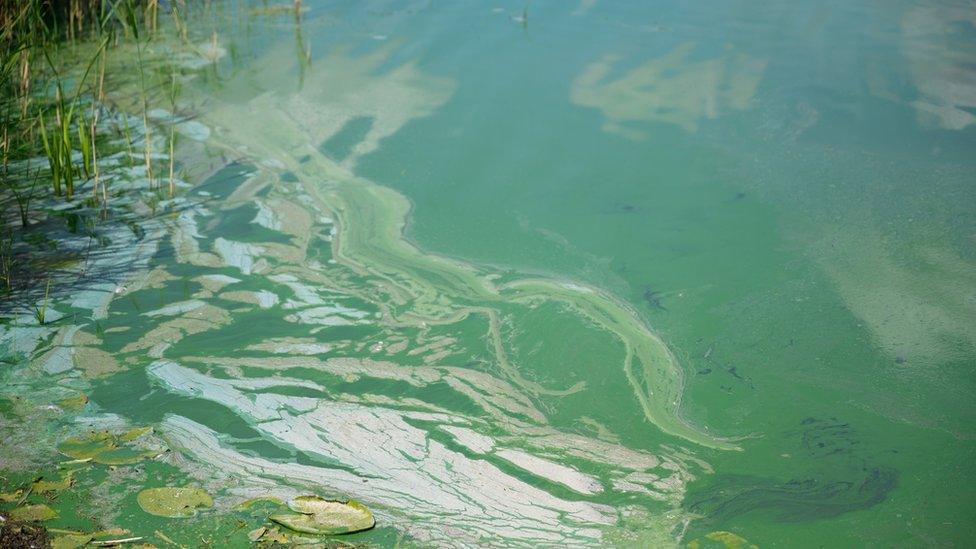
Blue-green algae has been found in waters in and around Northern Ireland over the summer
The statement also noted: "Drinking water supplied from the water treatment works which use Lough Neagh as their raw water sources, are designed with the potential for algae to be present and robust treatment processes are in place to manage this effectively."
What's gone wrong?
The blue-green algal bloom over the summer has caused havoc, not just in Lough Neagh but right up to Northern Ireland's north coast.
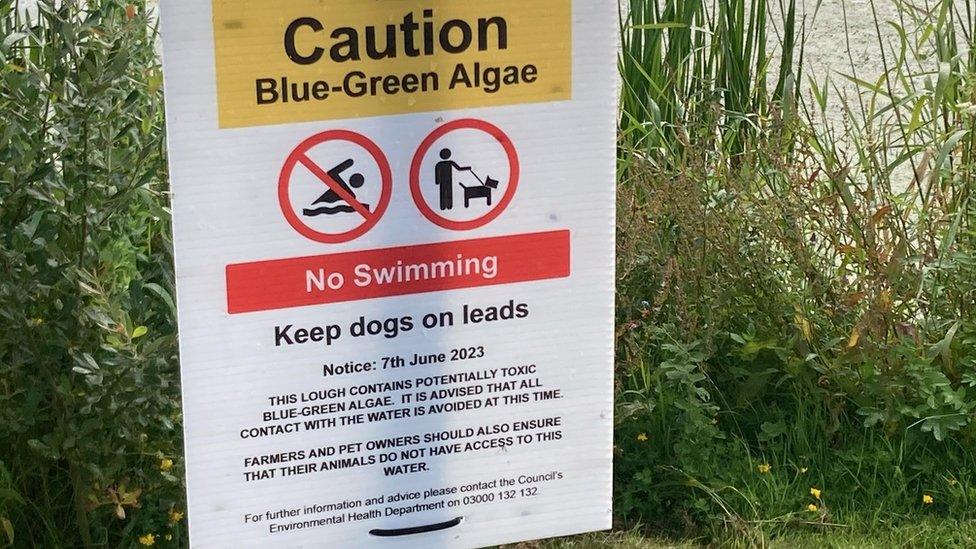
Swimmers at Ballyronan on the edge of Lough Neagh were warned against entering the water in June
Water from Lough Neagh flows down the River Bann and into the Atlantic Ocean at the Barmouth between Portstewart and Castlerock in County Londonderry.
That brought the algae to the coast, where it could not survive but caused a bathing ban on several beaches at the height of summer.
There were also bathing bans in areas around the lough.
Some traders blamed the effect of those bans for putting them out of business.
Anglers have been advised to "catch and release" fish that have been within Lough Neagh because of the risk the algae poses.
The bloom was the result of settled weather, invasive species and water pollution mostly due to agriculture.
Excess fertiliser runs off from fields into the water, taking growth-stimulating nitrogen and phosphorus into the lough.
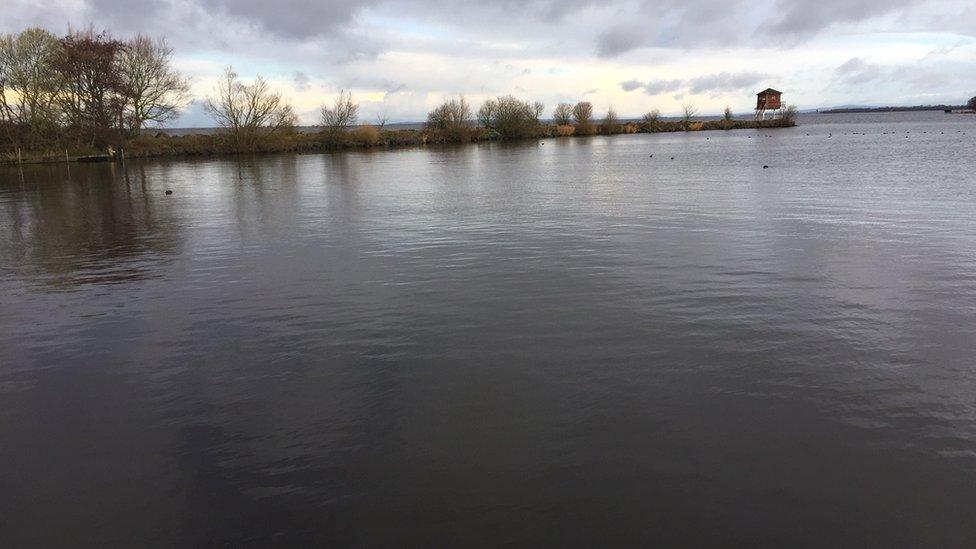
Lough Neagh is home to significant native species such as eel, trout and pollan
Almost two decades ago the zebra mussel invaded the lough.
It filters water, making it clearer and allowing the sun's light to penetrate deeper into the depths.
That, combined with the excess nutrients from fertiliser - eutrophication - caused the algae to "bloom" or grow rapidly.
The Department of Agriculture, Environment and Rural Affairs (Daera) has previously said that algae blooms can occur when there is abundant sunlight, still or slow-flowing water and sufficient levels of nutrients such as nitrogen and phosphorus.
Daera told BBC News NI it had a range of programmes to improve water quality and was working with partners and stakeholders.
- Published3 October 2023

- Published10 August 2023

- Published9 July 2023
